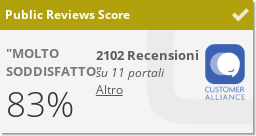Itinerary 'from the Brenner Pass to the Non Valley
Total length: 250 kilometres
The route starts at the Brenner Pass and, after passing Terme del Brennero, a gentle descent leads to Colle Isarco/Gossensass, an important summer holiday and winter sports resort located at the mouth of the Val di Fleres valley and surrounded by pine forests; it then leads to the beautiful town of Vipiteno/Sterzing,
with its unmistakable style reminiscent of Habsburg rule. Christmas is undoubtedly the most magical time to visit the streets of the centre, the pedestrian street with its Mitteleuropean charm and the famous markets. However, the enchantment of this town is not limited to this time of year. The museums, the Mining Museum and the Multscher, as well as the Parish Church, built in the 15th century, the Church of the Holy Spirit, and the medieval hospital, are, in fact, a fascinating attraction for tourists. In addition, one can also decide to go on excursions around the town, to the baroque castle of Mareta/Mareit, the only one of its kind in South Tyrol, or to Val Racines/Ratschingstal, where one can admire the Stanga/Stange waterfalls, which the Racines stream forms in a narrow rock gorge. Also nearby is the Monteneve mine, which was exploited for zinc and lead deposits until 1979.
Returning towards Sterzing, continue along the state road to the Pennes/Penser Joch pass. On this stretch, up to the pass, driving can be a lot of fun, given the winding nature of the route. From the pass, there is a wonderful view of the Breonie Alps. The characteristic Sugarloaf pyramid, the Cima Libera, the Parete Bianca, the Tribulaun, the Croda Alta and the Gran Pilastro emerge along the line in all their beauty and majesty.
From here it descends and at the mouth of the Val di Pennes/Penser Tal, the Val Sarentina/Sarntal begins.
At this point on the route, another small diversions can be made to Valdurna/Durnholz, a small village on the shores of a lake, untouched by the passage of time, whose richly frescoed parish church dates back to the 15th century.
Also nearby is the village of St. Martin/Reinswald, whose local crafts range from leather to the distillation of herbal liqueurs.
Back on the main road, you come to Sarentino/Sarnthein, a charming little village with South Tyrolean style and characteristic alleyways, where you can find excellent speck.
On the way to Bolzano, you reach the Renon/Ritten area via a winding road leading up the steep side of the valley. The Renon Valley is well known for the village of Collalbo/Klobenstein and the Red Earth Pyramids, incredible pinnacles that are a true geological miracle. In Collalbo, it is worth visiting the 17th-century church of Sant’Antonio, which houses some remarkable paintings. From Collalbo you then head towards Longostagno/Lengstein to reach the Earth Pyramids/Erdpyramiden, the real attraction of the area. The pinnacles can be reached on foot with a walk of about 10 minutes.
Back in the saddle again, the road to Bolzano/Bozen now leads into the vineyard area through the town of Auna di Sotto/Unterinn, offering more experienced motorcyclists the chance to indulge their riding skills. A few kilometres from the capital, which is definitely worth a thorough visit, you enter the so-called South Tyrolean Garden.
In the southern part of South Tyrol, all important issues are discussed over a drink. That is how it was in Goethe’s time, then in the 1960s when the Wine Road was built, and that is how it is still today. Cellar-hopping is certainly not advisable, but the purchase of a few excellent bottles will repay the sacrifice later.
All the localities in this area are close to each other and are characterised by a farming culture geared above all to the cultivation of vines: among them, Appiano/Eppan is a vital centre and an oasis of tranquillity amidst the green nature and hillsides rich in prized vineyards, and a place to stay especially in autumn. An interesting branch-off leads to Caldaro/Kaltern, another important wine centre, and the lake of the same name. We continue uphill; the panorama is marvellous over the Adige Valley and the western Dolomites and, after several hairpin bends, we cross the Mendola/Mendel Pass, a wooded saddle between Mount Roèn and Mount Pénegal, which leads into the Alta Val di Non.
The Valle di Non is famous for its high-altitude apples, but offers visitors much more: a spectacular landscape with forests, meadows, villages and peaks. From Mendola, follow the main road to Cavareno, where you can choose to turn right to enjoy the beautiful Fondo plateau or turn left to Santa Giustina Lake.
Before reaching the lake, a visit to the famous San Romedio Sanctuary is recommended. The sanctuary is located in Sanzeno, in Val di Non, Trentino, surrounded by nature, in an enchanted place, one of the most evocative in the Alps. When you reach the square, turn left onto the narrow asphalt road that leads to the sanctuary car park in 3 km. The sanctuary stands on a 90-metre-high rock and consists of several churches and chapels, which follow the conformation of the rock, linked by a steep staircase of 131 steps. The buildings that make up the sanctuary are of different dates; the oldest construction, built around the tomb of the hermit Romedius, dates back to around the year 1000.














